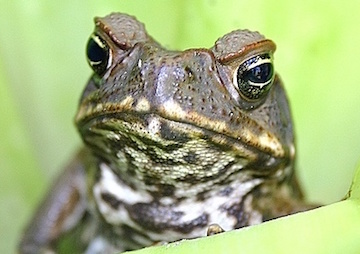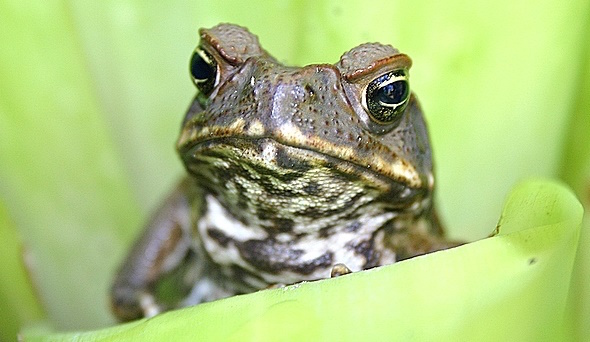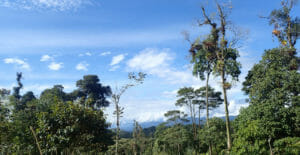Some Old Species Are Well-Suited to Survive Climate Change
A study of more than 600 vertebrate species shows those that have faced extreme environmental pressures in the past are now best equipped to survive climate change.
By Tim Radford / Climate News Network

The cane toad is one of the lucky winners of evolution’s lottery. (Shek Graham via Flickr)
This piece first appeared at Climate News Network.
LONDON — Swiss biologists believe they have identified the factors that could make vertebrate species withstand the shocks of climate change.
In what sounds like an evolutionary tautology, the creatures most likely to possess resilience and staying power are also most likely to be those that have already been around the longest, and survived earlier phases of environmental change.
This arrival at a general principle echoes another recent and more specific finding: that those African antelopes most endangered by climate change are those already most threatened by other pressures.
That global warming, and attendant climate change, poses a threat to many of the planet’s species is no secret.
Heightened dangers
Researchers have repeatedly warned, on the basis of regional or taxonomic surveys, that climate change will heighten the dangers to which many species are already exposed, while other studies have warned that the habitat changes linked to global warming are also likely to reduce species populations in many parts of the world.
But Sylvain Dubey, an ecologist and evolutionary biologist at the University of Lausanne, and colleagues went in search of the factors most likely to be associated with species resilience, or vulnerability.
They report in BMC Evolutionary Biology journal that they looked at biological information already available, and from it chose more than 600 species for their case study. These included 71 kinds of freshwater fish, 73 amphibians, 156 reptiles, 145 birds and 155 mammals.
“We have provided
a complete picture of the factors
shaping the resilience of species.”
They also assembled information about each creature’s latitudinal range, variations in colour, size and breeding type, the behaviour of the new-borns , and the overall age of each species — defined as the estimated time since the existing population last shared a common ancestor.
After plotting their information to see if they could discern a pattern, they found that those creatures that lived at the higher latitudes tended to be younger in evolutionary terms, because extinction rates were greater at those latitudes. Low latitudes seemed to offer more stable conditions.
Those species at higher latitudes that laid eggs also tended to be younger, while those that gave birth to live young seemed to cope at all latitudes, suggesting that they could survive cold climates.
Range of habitats
Colour variation was also important. Species with more than one kind of colour were likely to be on average 1.86 million years older than those that came in only one tint. Colour variation in this case seemed to suggest greater ability to exploit a range of habitats.
And the upshot was that those species that had already survived a series of extreme environmental changes in the past were the most favoured.
A young species such as the European hamster might be vulnerable to climate change, while much older and perhaps more versatile animals such as the Californian sea lion and the cane toad were the lucky winners of evolution’s lottery, and might be more likely to hang on.
“We have provided a complete picture of the factors shaping the resilience of species,” Dr Dubey says.
“Organisms that have persisted for a long time, and have survived across a wide range of environmental conditions, may be more likely to deal with future modifications of their environment. A recently-evolved taxon, in contrast, would not have been tested to the same degree.”
Tim Radford, a founding editor of Climate News Network, worked for The Guardian for 32 years, for most of that time as science editor. He has been covering climate change since 1988.
Your support matters…Independent journalism is under threat and overshadowed by heavily funded mainstream media.
You can help level the playing field. Become a member.
Your tax-deductible contribution keeps us digging beneath the headlines to give you thought-provoking, investigative reporting and analysis that unearths what's really happening- without compromise.
Give today to support our courageous, independent journalists.






You need to be a supporter to comment.
There are currently no responses to this article.
Be the first to respond.